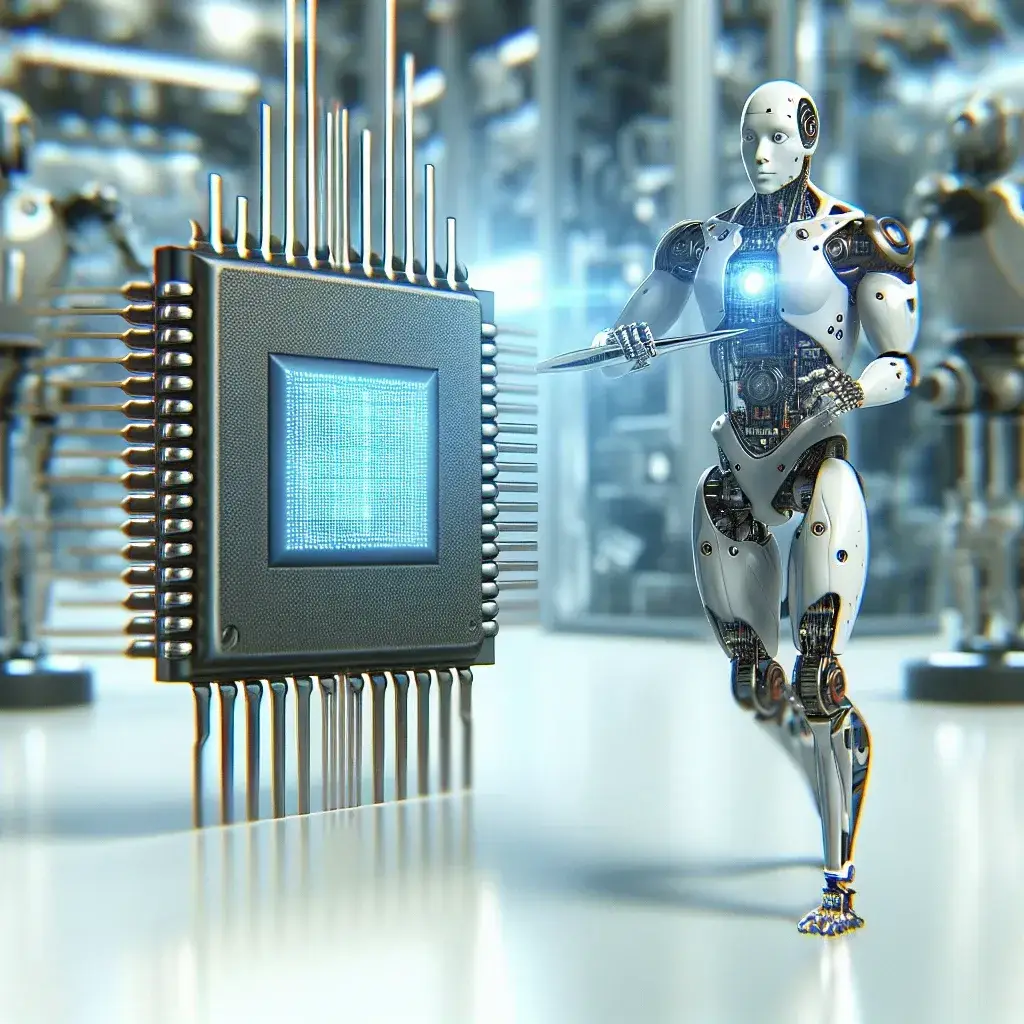Introduction
In a groundbreaking development, Intel has recently introduced its newest AI chip tailored specifically for robotics applications. This innovative chip is set to revolutionize the way robots perceive their environments, make decisions, and interact with the world around them. With advancements in artificial intelligence and machine learning, the implications of this technology are vast and far-reaching.
The Evolution of AI in Robotics
Robotics has undergone tremendous changes over the past few decades, transitioning from simple automated machines to highly sophisticated systems capable of performing complex tasks. The integration of AI has played a pivotal role in this evolution, allowing robots to learn from their experiences and adapt to new situations.
A Brief Historical Context
- Early Robots: The first robots were primarily programmed to perform repetitive tasks in manufacturing environments.
- The Rise of AI: As AI technologies began to emerge, the capabilities of robots expanded significantly, enabling them to handle tasks that required more advanced decision-making.
- Current State: Today’s robots are equipped with sensors, cameras, and advanced algorithms, making them capable of navigating and understanding their environments in real-time.
Overview of Intel’s New AI Chip
Intel’s latest AI chip has been designed with the specific needs of robotics in mind. Its architecture allows for high efficiency and low power consumption, making it ideal for various robotic applications, from industrial robots to autonomous drones.
Key Features
- Enhanced Processing Power: The chip boasts unparalleled processing capabilities, enabling complex computations to be performed swiftly.
- Energy Efficiency: With a focus on low power consumption, the chip extends the operational life of battery-powered robots.
- Advanced AI Algorithms: The chip supports a wide range of AI algorithms, enhancing machine learning capabilities.
The Impact on Robotics Applications
The introduction of Intel’s AI chip is expected to have significant implications across various sectors. From manufacturing to healthcare, the potential applications are vast.
Manufacturing
In the manufacturing sector, robots equipped with this AI chip can enhance production lines by performing quality control, managing inventory, and even predicting maintenance needs.
Healthcare
In healthcare, robotic assistants can provide support in surgeries, assist patients with mobility issues, and even aid in rehabilitation processes.
Logistics
Autonomous delivery drones and robots can streamline the logistics sector, improving efficiency and reducing delivery times.
Future Predictions for Robotics
As the technology behind AI chips continues to evolve, the future of robotics holds exciting possibilities. Experts predict that:
- Robots will become increasingly autonomous, capable of making decisions without human intervention.
- Collaboration between robots and humans will become seamless, with robots taking on more complex tasks.
- AI-driven robots will be able to learn from their environments and experiences, leading to improved performance over time.
Pros and Cons of the New AI Chip
Pros
- Increased Efficiency: The AI chip allows robots to perform tasks more efficiently and accurately.
- Cost-Effectiveness: Over time, the initial investment in advanced robotics will lead to cost savings in labor and increased productivity.
- Adaptability: The chip’s support for various AI algorithms means that it can be adapted for different applications.
Cons
- Job Displacement: As robots become more capable, there is a concern about job losses in sectors where robots replace human workers.
- Ethical Considerations: The use of AI in robotics raises ethical questions regarding decision-making and autonomy.
- Initial Costs: The initial cost of implementing advanced robotics can be high for some businesses.
Real Examples of Robotics Using AI
Several industries are already benefiting from the integration of AI in robotics:
Autonomous Vehicles
Companies like Waymo and Tesla are at the forefront of using AI chips to enable their vehicles to navigate and make decisions on the road.
Warehouse Robots
Amazon’s Kiva robots utilize AI to manage inventory and fulfill orders efficiently.
Healthcare Assistant Robots
Robots like the da Vinci surgical system help surgeons perform complex procedures with greater precision.
Cultural Relevance
The rise of AI in robotics also reflects broader cultural shifts towards technology-driven solutions. As society increasingly embraces automation, the dialogue surrounding the ethical implications of these technologies continues to grow.
Conclusion
Intel’s debut of its AI chip designed for robotics applications marks a significant milestone in the evolution of robotics and artificial intelligence. As industries continue to leverage this technology, the benefits will undoubtedly be profound, leading to a future where robots play an integral role in our daily lives. The journey has just begun, and the possibilities are limitless.

